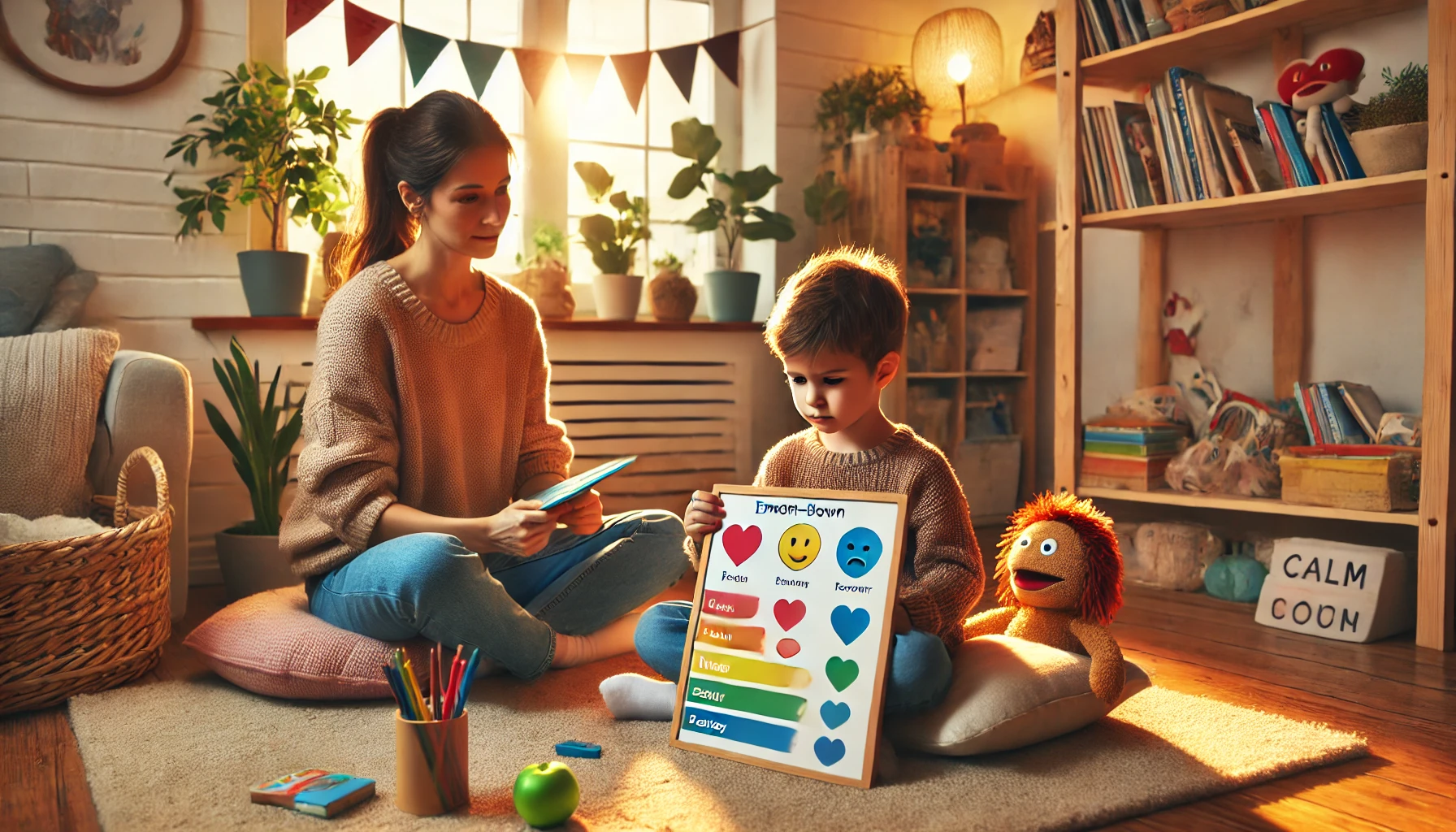How to Teach Young Children About Managing Their Emotions
Helping young children understand and regulate their emotions is essential for their social and emotional development. When kids learn to express their feelings in a healthy way, they build resilience, improve communication, and strengthen their relationships. Parents can support emotional regulation through role-modeling, structured activities, and gentle guidance. In this article, we’ll explore practical ways to help children manage their emotions effectively.
Why Teaching Emotional Management is Important
- Encourages self-awareness – Helps children recognize and name their feelings.
- Builds emotional intelligence – Teaches kids how to handle emotions constructively.
- Reduces frustration and tantrums – Provides tools to cope with big feelings.
- Improves relationships – Helps children express themselves calmly and respectfully.
- Prepares for school and social settings – Develops patience and conflict resolution skills.
1. Teach Children to Identify Their Emotions
Naming emotions helps children understand what they’re feeling and why.
Activity Idea:
- Use an emotion chart with faces and names for different feelings.
- Ask, “How are you feeling right now?” and help them find the right word.
- Read books about emotions and discuss how the characters feel.
What Kids Learn:
- How to recognize and label emotions
- That all feelings are normal and okay
- The first step to managing emotions is understanding them
2. Encourage Expressing Feelings with Words
Teaching children to talk about emotions helps prevent outbursts and frustration.
Activity Idea:
- Teach simple phrases like “I feel sad because…” or “I’m mad because…”
- Encourage children to talk about their day and what made them happy or upset.
- Use puppets or dolls to act out emotions and practice expressing feelings.
What Kids Learn:
- How to communicate feelings instead of acting out
- The importance of using words instead of physical reactions
- That expressing emotions leads to understanding and support
3. Introduce Calming Techniques for Big Emotions
Helping children learn how to calm down teaches emotional self-regulation.
Activity Idea:
- Teach deep breathing exercises: “Smell the flower, blow out the candle.”
- Create a calm-down corner with soft pillows and quiet activities.
- Encourage movement-based calming, like stretching or jumping in place.
What Kids Learn:
- How to manage overwhelming emotions
- That taking a break helps regain control
- Healthy ways to cope with frustration
4. Use Storytelling to Teach Emotional Regulation
Books and stories help children relate to characters who experience different emotions.
Activity Idea:
- Read books like The Color Monster or When Sophie Gets Angry—Really, Really Angry.
- Pause and ask, “What is the character feeling? What could they do to feel better?”
- Relate the story to real-life situations your child has experienced.
What Kids Learn:
- How to recognize emotions in themselves and others
- That emotions are temporary and manageable
- Different strategies for calming down
5. Model Healthy Emotional Expression
Children learn emotional regulation by watching how adults handle their own feelings.
Activity Idea:
- Say, “I feel frustrated right now, so I’m going to take a deep breath.”
- Show self-control when facing challenges, like being stuck in traffic.
- Talk about emotions openly: “I felt really happy when you gave me a hug!”
What Kids Learn:
- That emotions are normal for everyone
- How to manage feelings in a healthy way
- That talking about emotions is a positive habit
6. Encourage Problem-Solving for Emotional Challenges
Helping kids think through solutions builds resilience and self-control.
Activity Idea:
- When they feel frustrated, ask, “What can we do to fix this?”
- Encourage trying different strategies: “Would talking help, or do you need a quiet moment?”
- Praise problem-solving efforts: “I love how you calmed yourself down!”
What Kids Learn:
- How to think before reacting
- That they have control over their emotions
- The power of problem-solving in emotional situations
7. Teach Empathy and Understanding for Others’ Feelings
Recognizing emotions in others helps children develop kindness and patience.
Activity Idea:
- Ask, “How do you think your friend felt when that happened?”
- Role-play scenarios where kids practice comforting someone.
- Encourage simple acts of kindness, like offering a hug or saying kind words.
What Kids Learn:
- How to recognize emotions in others
- That kindness helps build strong relationships
- The importance of being aware of others’ feelings
8. Praise and Reinforce Positive Emotional Responses
Recognizing when children manage their emotions well encourages them to keep practicing.
Activity Idea:
- Say, “I love how you took deep breaths instead of yelling—that was very smart!”
- Use a “feelings chart” where kids track and celebrate their emotional progress.
- Ask, “How did you feel after calming down?” to reinforce self-awareness.
What Kids Learn:
- That emotional regulation is valued and appreciated
- The importance of reflecting on their own actions
- Confidence in handling emotions independently
Final Thoughts
Teaching young children about managing their emotions helps them build self-awareness, resilience, and strong social skills. By modeling healthy emotional responses, encouraging open communication, and providing calming strategies, parents can help children navigate their feelings in a positive and constructive way.
